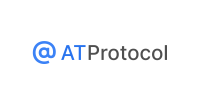Bluesky has captured the attention of tech enthusiasts and social media users alike with its decentralized approach. At the heart of this innovative platform is the Authenticated Transfer Protocol (AT Protocol)—a groundbreaking framework designed to revolutionize how social media operates. By addressing critical issues like data ownership, interoperability, and transparency, the AT Protocol is poised to redefine the digital landscape.

What Is the AT Protocol?
The AT Protocol is an open-source standard for decentralized social networks. Unlike traditional platforms that centralize user data and interactions, the AT Protocol distributes these responsibilities across a network of servers, allowing users and developers to interact in a more flexible and transparent way.
Key aspects of the AT Protocol include:
-
Decentralization
- Shifts control from a single entity to a distributed network.
- Enables users to choose where their data is stored and who manages their content.
-
Interoperability
- Creates a unified protocol that multiple platforms can use.
- Facilitates seamless interaction across apps, ensuring users are not locked into one ecosystem.
-
Account Portability
- Allows users to move their accounts between platforms without losing data or connections.
- Offers independence from platform-specific restrictions.
-
Algorithmic Transparency
- Gives users insight into how algorithms work and enables them to choose or customize their own.
Why Does the AT Protocol Matter?
The AT Protocol addresses some of the most pressing challenges in today’s digital world:
1. Data Ownership
In traditional social media, platforms own user data, often monetizing it through targeted advertising or selling to third parties. The AT Protocol shifts ownership back to users, giving them control over their information and how it’s shared.
2. Content Moderation
Centralized platforms often face criticism for inconsistent or biased content moderation. With the AT Protocol, moderation becomes more decentralized, enabling communities to set their own rules while adhering to overarching standards.
3. Innovation and Competition
By standardizing a decentralized framework, the AT Protocol encourages developers to build interoperable apps and services. This openness fosters innovation and creates a competitive environment where users benefit from diverse choices.
4. Privacy and Security
The protocol’s decentralized nature reduces the risks associated with data breaches and surveillance. With enhanced cryptographic measures, users can enjoy safer and more private interactions.
How the AT Protocol Works
The AT Protocol is designed to provide a seamless experience for users and developers. Here’s how it functions:
- Data Distribution: Instead of storing all data on centralized servers, the protocol uses a distributed network of servers that communicate securely.
- Authentication: Cryptographic keys ensure that users and apps are properly authenticated, enhancing security.
- Content Syndication: Posts and interactions can be shared across platforms using the protocol, ensuring interoperability.
- Algorithm Design: Developers can create algorithms that prioritize user preferences, while users can select or modify these algorithms for their feeds.
Applications of the AT Protocol Beyond Bluesky
While the AT Protocol powers Bluesky, its potential applications extend far beyond one platform. Some examples include:
- Decentralized Messaging Apps: Secure, interoperable communication networks where users own their conversations.
- Collaborative Work Platforms: Tools for teams to collaborate across decentralized networks without relying on centralized servers.
- Decentralized Marketplaces: E-commerce platforms where users control their data and transactions.
- Creative Communities: Networks for artists, writers, and creators to share their work without the constraints of centralized algorithms.
Challenges of the AT Protocol
Despite its promise, the AT Protocol faces some hurdles:
-
Technical Complexity
- Building and maintaining decentralized networks can be resource-intensive.
-
Scalability
- Ensuring the protocol can handle large-scale usage without compromising performance is a challenge.
-
Adoption
- Convincing users and developers to transition from established systems to a new protocol requires time and trust.
-
Regulation
- Governments may impose regulations on decentralized platforms, complicating their implementation and growth.
The Future of Decentralized Social Media
As the AT Protocol gains traction, it has the potential to become a foundation for the next generation of social media. Platforms like Bluesky are early adopters, demonstrating the practical applications and benefits of decentralization. Over time, the protocol could inspire a wave of innovation, giving users more control over their online lives.
Conclusion
The AT Protocol represents a paradigm shift in how digital networks are built and managed. By prioritizing decentralization, interoperability, and user autonomy, it addresses the shortcomings of traditional social media. As Bluesky and other platforms adopt this protocol, the digital world is set to become more inclusive, transparent, and innovative.
For those seeking a glimpse into the future of the internet, the AT Protocol is a technology worth exploring.





